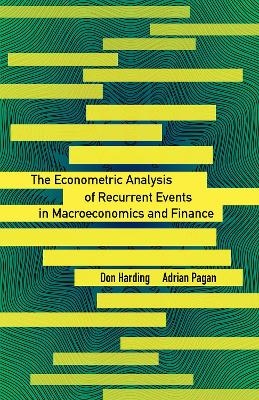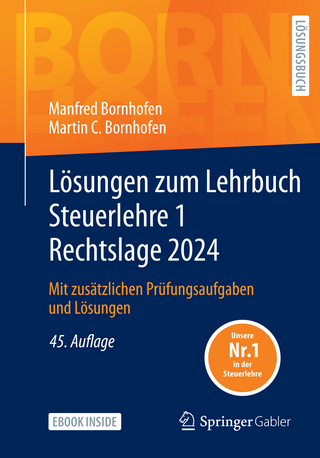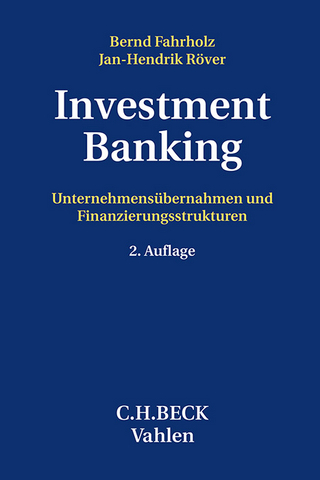
The Econometric Analysis of Recurrent Events in Macroeconomics and Finance
Princeton University Press (Verlag)
978-0-691-16708-4 (ISBN)
The book offers a range of econometric tools and techniques that researchers can use to measure recurrent events, summarize their properties, and evaluate how effectively economic and statistical models capture them. These methods also offer insights for developing models that are consistent with observed financial and real cycles. This book is an essential resource for students, academics, and researchers at central banks and institutions such as the International Monetary Fund.
Don Harding is professorial research fellow at the Centre of Policy Studies (CoPS) at Victoria University and honorary professor of economics at La Trobe University. Adrian Pagan is professor emeritus of economics at the University of Sydney and professorial fellow at the University of Melbourne. His books include Nonparametric Econometrics.
Series Editors' Introduction ix Preface xi 1 Overview 1 1.1 Introduction 1 1.2 Describing the Events 2 1.3 Using the Event Indicators ("States") 10 1.4 Prediction of Recurrent Events 12 1.5 Conclusion 13 2 Methods for Describing Oscillations, Fluctuations, and Cycles in Univariate Series 15 2.1 Introduction 15 2.2 Types of Movements in Real and Financial Series 16 2.3 Prescribed Rules for Dating Business Cycles 26 2.4 Prescribed Rules for Dating Other Types of Real Cycles 38 2.5 Prescribed Rules for Dating Financial Cycles 40 2.6 Relations between Cycles and Oscillations 41 2.7 The Nature of St and Its Modeling 45 2.8 Conclusion 50 3 Constructing Reference Cycles with Multivariate Information 51 3.1 Introduction 51 3.2 Determining the Reference Cycle via Phases 52 3.3 Combining Specific Cycle Turning Points 54 3.4 Finding Turning Points by Series Aggregation 60 3.5 Conclusion 61 4 Model-Based Rules for Describing Recurrent Events 62 4.1 Introduction 62 4.2 Dating Cycles with Univariate Series 63 4.3 Model-Based Rules for Dating Events with Multivariate Series 82 4.4 Conclusion 85 5 Measuring Recurrent Event Features in Univariate Data 86 5.1 Introduction 86 5.2 The Fraction of Time Spent in Expansions 87 5.3 Representing the Features of Phases 89 5.4 Amplitudes and Durations of Phases 90 5.5 The Shapes of Phases 94 5.6 The Diversity of Phases 99 5.7 Plucking Effects and Recovery Times 100 5.8 Duration Dependence in Phases 101 5.9 Conclusion 106 6 Measuring Synchronization of Recurrent Events in Multivariate Data 107 6.1 Introduction 107 6.2 Moment-Based Measures 108 6.3 Other Approaches to Measuring Synchronization 115 6.4 Synchronization and Model-Based Rules 116 6.5 Application to Synchronization of Industrial Production Cycles 116 6.6 Multivariate Synchronization 118 6.7 Comovement of Cycles 119 6.8 Conclusion 121 7 Accounting for Observed Cycle Features with a Range of Statistical Models 122 7.1 Introduction 122 7.2 U.S. Cycles as a Benchmark 123 7.3 The Business Cycle in a Range of Countries 129 7.4 Can U.S. Business Cycles Be Generated by Linear Models? 129 7.5 What Do Non-Linear Models Add? 132 7.6 Two Markov Switching Models 137 7.7 Using the Binary Indicators in Multivariate Systems 138 7.8 Conclusion 142 8 Using the Recurrent Event Binary States to Examine Economic Modeling Issues 143 8.1 Introduction 143 8.2 Estimating Univariate Models with Constructed Binary Data 145 8.3 What Do Variance Decompositions Tell Us About the Cycle? 150 8.4 The Role of Structural Shocks in Determining Cycle Features 152 8.5 Financial Effects and the Business Cycle 154 8.6 Conclusion 161 9 Predicting Turning Points and Recessions 163 9.1 Introduction 163 9.2 Bounding the Probability of the Occurrence of a Peak 166 9.3 Predicting Recessions with a Range of Variables 168 9.4 Changing the Event Defining Recessions and Turning Points 182 9.5 Conclusion 184 References 187 Index 205
| Erscheinungsdatum | 06.08.2016 |
|---|---|
| Reihe/Serie | The Econometric and Tinbergen Institutes Lectures |
| Zusatzinfo | 20 line illus. 18 tables. |
| Verlagsort | New Jersey |
| Sprache | englisch |
| Maße | 140 x 216 mm |
| Gewicht | 425 g |
| Themenwelt | Wirtschaft ► Betriebswirtschaft / Management ► Finanzierung |
| Wirtschaft ► Volkswirtschaftslehre ► Makroökonomie | |
| Wirtschaft ► Volkswirtschaftslehre ► Ökonometrie | |
| ISBN-10 | 0-691-16708-7 / 0691167087 |
| ISBN-13 | 978-0-691-16708-4 / 9780691167084 |
| Zustand | Neuware |
| Haben Sie eine Frage zum Produkt? |
aus dem Bereich


